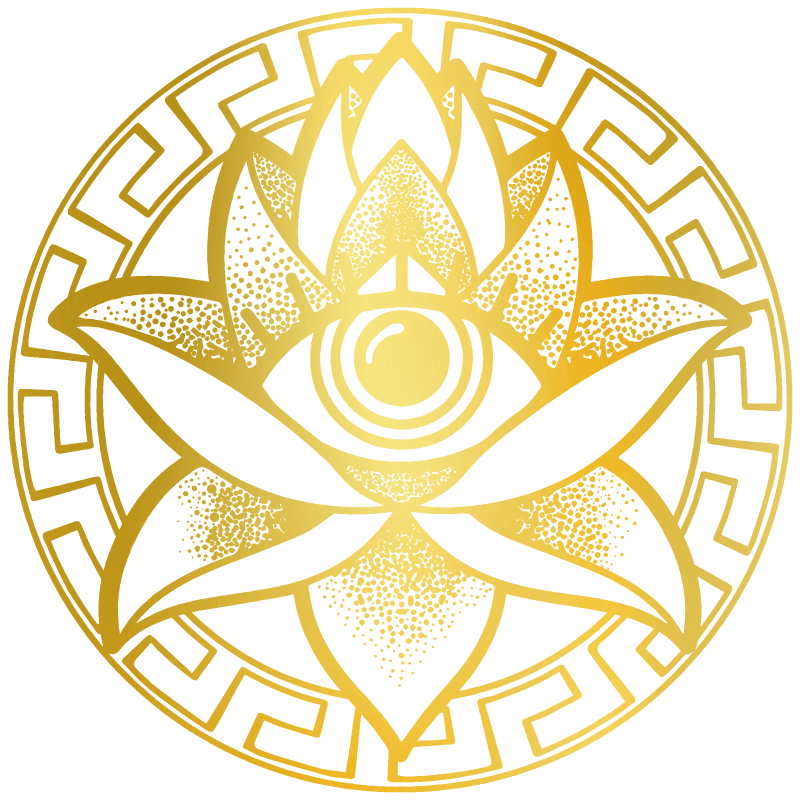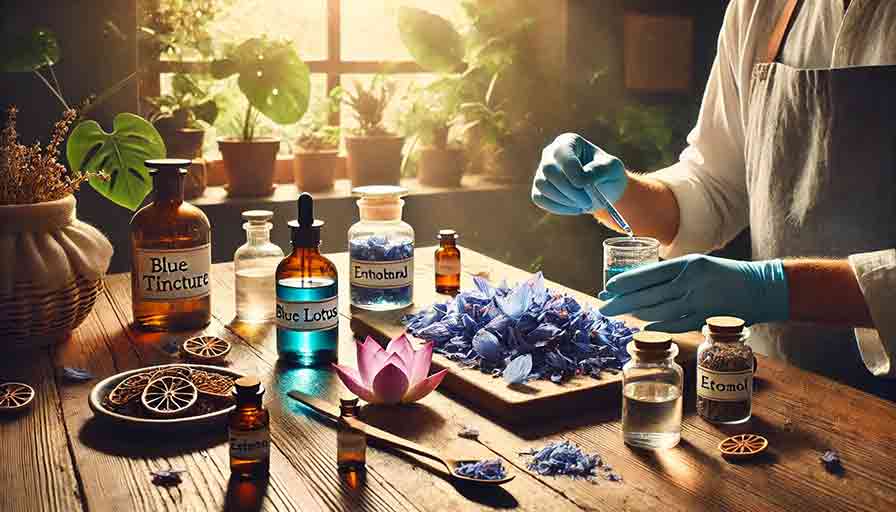The Blue Lotus flower (Nymphaea caerulea), often referred to as the “flower of enlightenment,” has been revered since ancient Egypt for its calming, euphoric, and mildly psychoactive effects. Known for promoting relaxation, vivid dreams, and meditative clarity, it continues to captivate modern herbalists and wellness enthusiasts. While you can find Blue Lotus tinctures online, creating your own allows you to control the potency, purity, and quality ensuring a safe and authentic herbal extract.
This detailed guide will walk you through everything you need to know about making Blue Lotus tincture safely at home, from choosing the right materials to understanding the maceration process and safe dosing.
Understanding Blue Lotus and Its Benefits
Before diving into tincture preparation, it’s essential to understand why Blue Lotus holds such an esteemed place in natural wellness traditions. This sacred flower was once steeped in wine by Egyptian priests to induce states of heightened awareness and spiritual insight. Today, the flower’s bioactive compounds—especially apomorphine and nuciferine—are recognized for their calming, sedative, and mood-enhancing properties.
Modern users report that Blue Lotus can:
-
Induce mild euphoria and relaxation
-
Enhance meditation and dream recall
-
Reduce anxiety and stress
-
Support restful sleep
When made into a tincture, these benefits are preserved in concentrated liquid form, offering convenience and longevity.
Choosing Quality Blue Lotus Flowers
The foundation of a safe, potent tincture begins with high-quality Blue Lotus petals. Always buy dried whole flowers or petals from trusted herbal suppliers who specialize in ethically sourced botanicals. The color should be vibrant—deep blue or violet—and the aroma mildly floral with earthy undertones.
Avoid crushed or powdered forms unless absolutely necessary, as these are more prone to oxidation and contamination. Organic or wildcrafted Blue Lotus ensures no pesticide residue or synthetic additives compromise your tincture’s purity.
Selecting the Right Alcohol Base
The choice of solvent determines both the potency and safety of your tincture. Ethanol—found in high-proof grain alcohol (like Everclear)—is the most effective and traditional solvent for herbal extraction. Alcohol pulls out the full range of alkaloids, flavonoids, and volatile compounds from the petals.
For home use:
-
Use 40–60% alcohol (80–120 proof) for gentle extraction.
-
If you prefer a stronger tincture, 70–95% alcohol can be used for maximum efficiency.
Avoid using isopropyl or denatured alcohols, as they are toxic and unsafe for consumption.
For a non-alcoholic version, food-grade vegetable glycerin can be used, although the extraction will be milder and less shelf-stable.
Preparing the Blue Lotus for Extraction
-
Measure your dried Blue Lotus petals. For a small batch, start with around 25 grams of dried petals.
-
Lightly crush the petals by hand or with a mortar and pestle. This increases surface area, helping the alcohol extract more compounds.
-
Place the petals into a clean, dry glass jar with an airtight lid. Amber glass is ideal, as it protects the mixture from light degradation.
Maceration: The Art of Extraction
Now comes the transformative stage—maceration. This is where the petals soak in alcohol, releasing their beneficial compounds into the liquid.
-
Add your alcohol. Pour just enough to completely submerge the petals, maintaining a ratio of roughly 1 part herb to 5 parts alcohol.
-
Seal the jar tightly and shake it gently to mix.
-
Store the jar in a cool, dark place—like a cabinet or pantry—for 4 to 6 weeks.
-
Every few days, shake the jar lightly to ensure even extraction and prevent stagnation.
During this time, the liquid will gradually take on a deep golden to blue hue, signaling that the Blue Lotus essence is infusing beautifully into the solvent.
Straining and Bottling Your Tincture
After the maceration period, it’s time to separate the liquid extract from the plant matter.
-
Strain the tincture using a fine mesh strainer or cheesecloth into a clean bowl.
-
Gently press or squeeze the remaining petals to extract every drop of the precious liquid.
-
Transfer the filtered tincture into small amber glass dropper bottles. These protect it from UV light and make dosing easier.
Label each bottle with the date, plant name, and alcohol percentage for future reference. Properly stored in a cool, dark place, your Blue Lotus tincture can last up to five years.
Determining the Right Dosage
Because tinctures are concentrated extracts, start with small doses to gauge your body’s response. A common starting point is 1–2 droppers (1–2 mL) diluted in a bit of water, tea, or juice.
For relaxation or sleep, use it 30–60 minutes before bedtime. For meditation or creativity, a smaller dose may suffice. Each individual’s tolerance and desired effect differ, so listen to your body and adjust accordingly.
Caution: Do not mix Blue Lotus tincture with alcohol, sedatives, or other psychoactive substances. Always consult a healthcare professional if you are pregnant, nursing, or taking medication.
Safety Precautions and Best Practices
Homemade tinctures are safe when prepared correctly, but attention to hygiene and proportion is key.
-
Always use sterilized jars, clean tools, and fresh ingredients.
-
Keep the tincture out of reach of children and pets.
-
Never use moldy, old, or damp herbs.
-
Store your tincture in a dark glass bottle and away from direct sunlight to maintain potency.
If your tincture develops an off smell, cloudy appearance, or mold, discard it immediately.
Enhancing the Blue Lotus Experience
For an enriched sensory experience, some enthusiasts combine Blue Lotus tincture with other relaxing botanicals such as Damiana, Passionflower, or Lavender. However, each plant interacts differently with the body, so research and moderation are essential.
Adding a few drops to tea or warm water allows for smoother ingestion and a gentler onset of effects. Some even blend it into aromatherapy rituals or meditative ceremonies to heighten tranquility and mindfulness.
Why Make Your Own Blue Lotus Tincture?
Crafting your own tincture ensures:
-
Transparency: You control every ingredient.
-
Customization: Adjust potency to suit your needs.
-
Purity: Avoid additives or preservatives found in commercial versions.
-
Sustainability: Reduce packaging waste and support ethical sourcing.
Most importantly, it reconnects you with the ancient ritual of herbal alchemy, where nature and mindfulness meet.
Conclusion
Creating a Blue Lotus tincture at home is more than a DIY project—it’s a mindful process rooted in centuries of holistic tradition. By selecting quality flowers, using safe extraction methods, and respecting the potency of this sacred herb, you can craft a tincture that embodies calm, clarity, and balance.
Handled responsibly, your tincture becomes a powerful tool for relaxation and spiritual well-being—one drop at a time.
FAQs
1. How long should I let Blue Lotus soak in alcohol for tincture?
Let the Blue Lotus petals macerate for at least 4 to 6 weeks in a cool, dark place to extract the full range of beneficial compounds.
2. Can I make a Blue Lotus tincture without alcohol?
Yes, you can use food-grade vegetable glycerin as a non-alcoholic alternative, though the tincture will be less potent and have a shorter shelf life.
3. What is the ideal dosage for Blue Lotus tincture?
Start with 1–2 mL (one to two droppers) mixed with water or tea. Adjust the amount gradually depending on your desired relaxation or mood effects.
4. How long does homemade Blue Lotus tincture last?
When stored in amber glass bottles in a dark, cool place, your tincture can remain effective for up to five years.
5. Is Blue Lotus tincture safe to mix with other herbs or alcohol?
It’s best not to mix with alcohol, sedatives, or other psychoactive herbs. Always consult a healthcare professional before combining botanicals.

